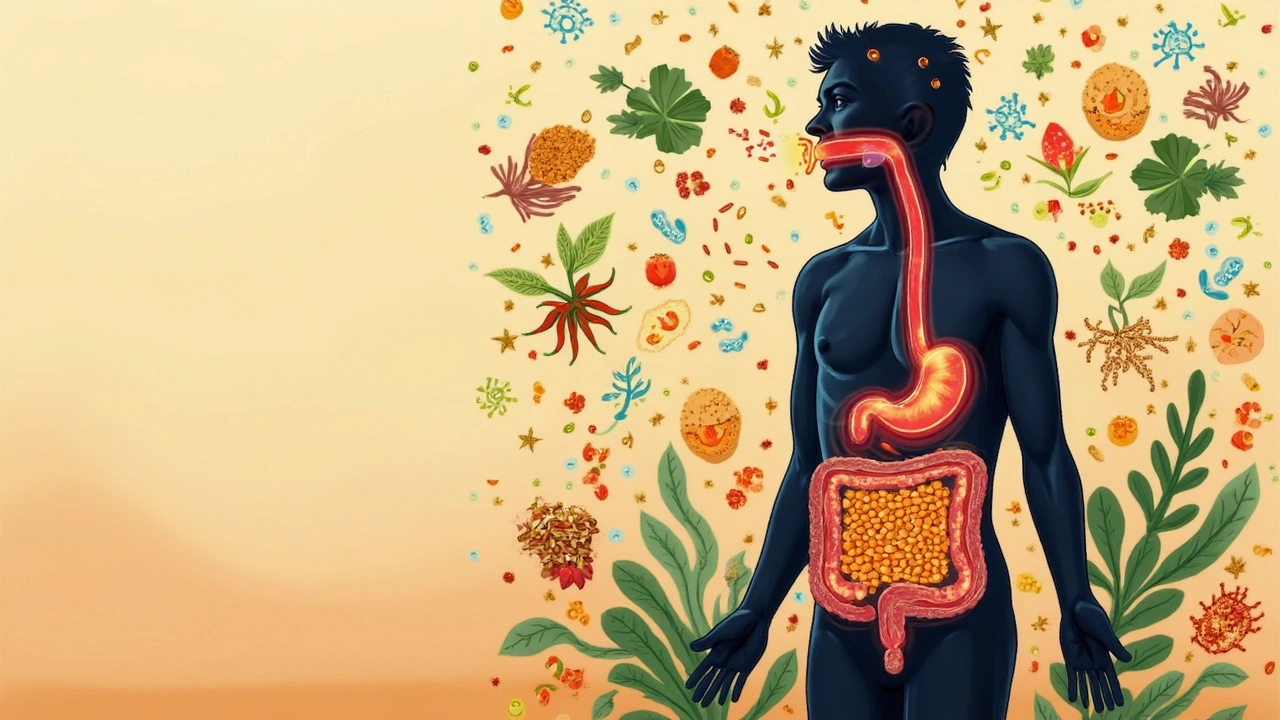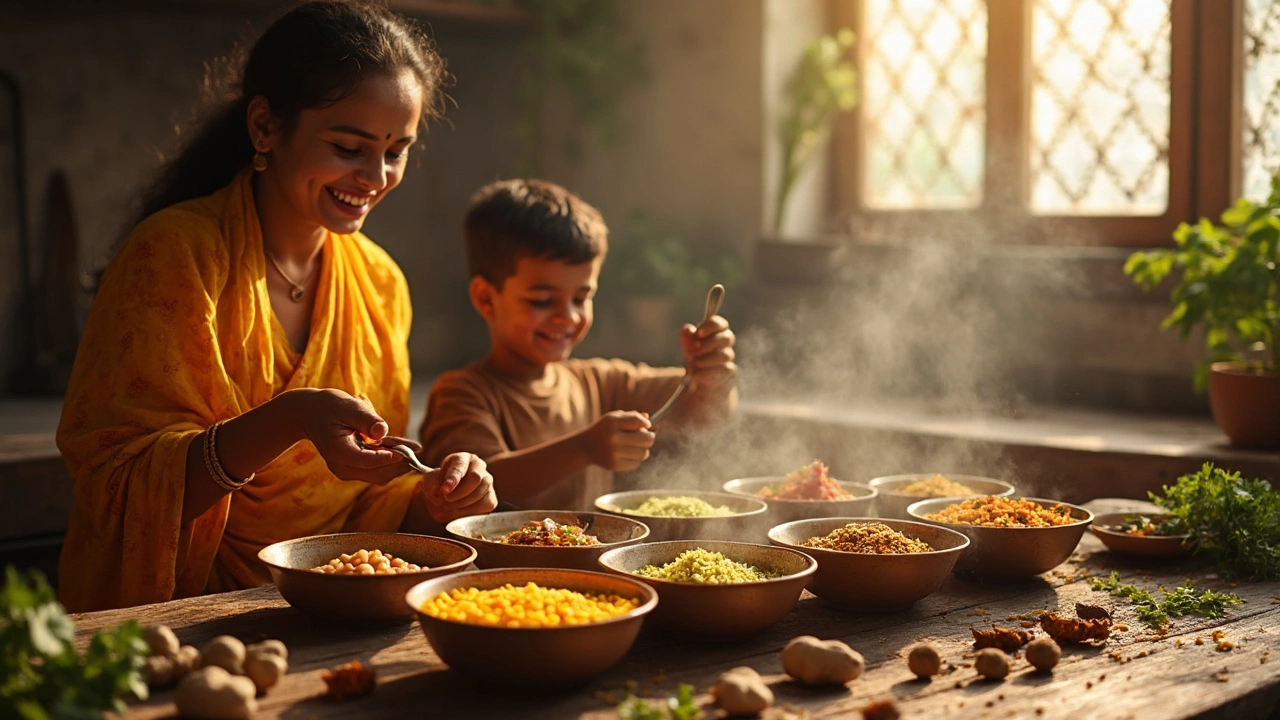Gut health isn’t just a trendy buzzword—what you eat really does change how your body feels, inside and out. If you’ve ever wondered if your daily bowl of dal does more than just fill you up, you’re not alone. The big question: do lentils actually help clean your gut?
First things first: when people say “clean the gut,” they’re mostly talking about keeping things moving smoothly and supporting the bacteria that help us digest food. Lentils, aka dal, are packed with fiber, and it’s this fiber that acts like a gentle broom inside your intestines—not cleaning with soap, but helping waste move along, so nothing gets stuck. That’s why after a week of eating dal, some folks say they just feel… lighter.
But here’s where it gets interesting. Not all types of dal are the same. Some, like masoor or moong, are easier to digest and can be a better choice if you get bloated easily. Throw in some spices like cumin or hing, and you’ll help cut down on any chance of gas. Simple tweaks to your dal game can seriously up your gut’s happiness.
- What Gut Cleaning Really Means
- How Lentils Affect Digestion
- Best Dal Recipes for Gut Health
- Simple Tips for a Happier Tummy
What Gut Cleaning Really Means
You might hear people say, “clean your gut,” but most of us don’t really know what that means. It doesn’t mean scrubbing your insides or doing some extreme detox. Instead, it’s about giving your digestive system what it needs to do its job smoothly—so you pass waste easily, avoid constipation, and keep a steady balance of good bacteria.
Here’s the thing: the gut has its own in-built cleaning crew. When you eat the right foods—especially fiber, which lentils have a lot of—your gut keeps things moving. You also feed the helpful bacteria inside that break down food, support your immune system, and help with stuff like energy.
When your gut health is off, you might feel bloated, get irregular, or even notice low energy or weird skin flare-ups. If it’s running well, you just feel good. No pain, no sluggishness, no emergency dashes to the bathroom.
The actual "cleaning" comes from a mix of:
- Eating fiber-rich foods like lentils, veggies, and fruits
- Drinking enough water for everything to move smoothly
- Getting regular activity—yes, even a walk helps
- Limiting stuff that messes with your gut (think ultra-processed foods and too much sugar)
So, gut cleaning isn’t about miracle potions or starving yourself. It’s about steady, smart food choices that keep your system ticking along without drama.
How Lentils Affect Digestion
Let’s get into how eating lentils, or lentils as people keep googling, actually changes what’s going on inside your gut. The secret weapon here is fiber. There are two kinds in dal: soluble and insoluble. Soluble fiber acts like a sponge, sucking in water and making your stool softer. Insoluble fiber is the pushy friend that helps move things along your gut so you’re not, well, stuck in the bathroom all morning.
Every 100 grams of cooked dal gives you roughly 7-8 grams of fiber, which is nearly a quarter of what most adults need every day. This steady supply keeps you regular without any fancy mixes or powders.
| Dal Type | Fiber per 100g (cooked) | Digestibility |
|---|---|---|
| Moong Dal | 8g | Easy |
| Masoor Dal | 7g | Moderate |
| Chana Dal | 8g | Heavier |
| Toor Dal | 7g | Moderate |
Here’s the clincher: the fiber in dal does more than just help with, you know, poop. It also feeds the good bacteria in your gut. These bacteria turn fiber into short-chain fatty acids, which can actually lower inflammation and boost immunity. People who eat lentils regularly tend to have more of these friendly bacteria and a happier gut overall.
A lot of us worry about getting gassy after eating dal. That’s totally normal and just means your body is getting used to breaking down all that fiber. If the problem is too much, try soaking lentils for at least 30 minutes and rinsing them a few times—this helps remove some of the tough-to-digest stuff. Cooking with ginger, cumin, or asafoetida (hing) can also make any trouble in your tummy way less likely.
Bottom line: dal isn’t just budget-friendly comfort food, it’s a natural way to help your gut do what it was made to do. Just go slow if you’re new to a fiber-rich diet, and let your system adjust one spoonful at a time.

Best Dal Recipes for Gut Health
When it comes to food that actually makes your gut work better, dal stands out because of its fiber content. A study in 2022 from the Indian Dietetic Association highlighted that regular eaters of dal had improved digestion compared to people who rarely touched the stuff. If you want to feel those benefits, here are a few easy dal recipes that make your tummy (and your taste buds) happy.
- Lentils and Spinach Dal: Start with split moong or masoor dal as they’re gentler on the stomach than chana or toor dal. Add loads of spinach near the end of cooking—this not only boosts fiber but brings in extra magnesium, which can help reduce bloating. Cook with minimal oil and toss in cumin and turmeric. Both spices are known to ease digestion.
- Moong Dal Khichdi: This classic is a lifesaver when your gut feels off. Moong dal cooks up light and fluffy, and when you pair it with rice, it’s easy to break down. Adding grated ginger while cooking helps keep gas away. You can skip any heavy cream or lots of ghee if your stomach is sensitive.
- Tadka Dal with Hing: Toor or masoor dal works well, but here’s the gut-friendly hack: always add a bit of asafoetida (hing) in the tempering. It helps tackle the kind of bloating and discomfort some people get after eating dal, so you can enjoy more without worry. Keep the spices simple—just cumin, ginger, and turmeric.
- Clear Dal Soup: If you’re recovering from a stomach bug or just want something super light, boil moong dal with lots of water, strain out the solids, and sip on the broth with a pinch of salt and turmeric. It goes easy on the gut while still packing in nutrients.
Want to level up any dal recipe? Soak your lentils for a few hours before cooking. This trick reduces compounds that cause gas and makes for a smoother meal. Another tip: keep the fat low and load up on herbs like coriander at the end. They don’t just add flavor, they support digestion too.
Simple Tips for a Happier Tummy
If you want to get the most out of your dal and really help your gut, it’s all about a few smart tweaks. First off, don’t just grab any pack of lentils. Go for whole, unpolished dal when you can—it holds more fiber and nutrients compared to the shiny, polished types. And remember, lentils are at their easiest to digest when you soak them for at least 30 minutes before cooking. This simple step can reduce stuff that causes bloating, making dal much gentler on your system.
Spices aren’t just for taste. Hing (asafoetida), cumin, and ginger can make your dal lighter on your stomach. These help you avoid that heavy feeling and cut down on gas. Adding a squeeze of lemon at the end boosts vitamin C, which helps your body grab more iron from the dal too. Win-win, really.
- Chew properly: Sounds basic, but slowing down and really chewing your food can cut down on indigestion.
- Skip heavy cream or loads of ghee, especially if you’re sensitive to fatty foods.
- Add some green veggies like spinach or bottle gourd to your dal – extra fiber, more vitamins, and makes the meal lighter.
- Pair dal with brown rice or millets instead of white rice; they pack more fiber and keep you full longer.
Curious about how much dal actually helps? Check out this quick table comparing fiber content in different dal types. The more fiber, the better your gut moves.
| Lentil Type | Fiber (per 100g, cooked) |
|---|---|
| Whole masoor dal | 7.6g |
| Moong dal (split, skinned) | 6.6g |
| Chana dal | 7.5g |
| Toor dal | 6.1g |
Start small if your tummy isn’t used to so much fiber. Suddenly eating a lot can cause bloating at first, so try half a cup of cooked dal, then increase gradually. If you’ve got a dog like my Zoya, you’ll know pets crave what’s on your plate, but stick to their kibble! Dal is packed with plant goodness and is perfect fuel for happy, regular digestion—just give your body a little time to adjust to extra fiber, and you’ll definitely feel the difference.
